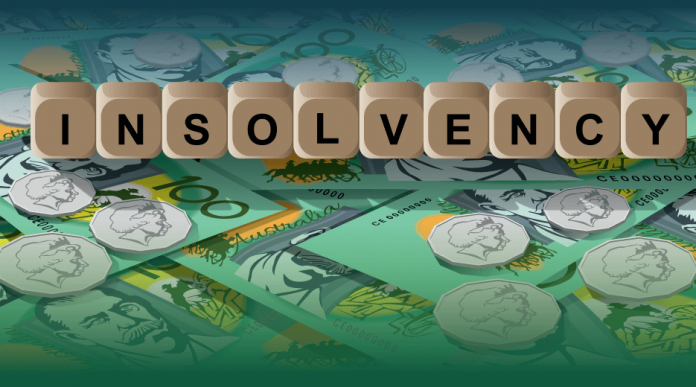This article is written by Ms. Shivani Agarwal, from Institute of Law, Nirma University. This is a comprehensive article that discusses in detail about the latest amendments made in the Insolvency and Bankruptcy Code. Also, this article talks about the latest landmark judgments.
Table of Contents
Introduction
When we observe the Indian legal system, one can easily find laws and regulations for almost every aspect whether it is criminal cases, civil disputes, industrial issues, etc. and one such law that deals with insolvency associated matters of corporates, individuals, etc. is the Insolvency and Bankruptcy Code, 2016. If we talk about the present legal system that regulates the issue related to the insolvency and bankruptcy matters of corporations, individuals, etc. then there are different overlapping laws and various regulatory bodies that deal with the financial failure and related matters of insolvency and bankruptcy. This code basically provides a new and updated regulatory framework that includes a regulator, insolvency professionals and other such related concepts. This code has created a way for the reforms that were needed in this particular sector.
Insolvency and Bankruptcy Code 2016 (IBC)
The Insolvency and Bankruptcy Code 2016 is a consistent, comprehensive insolvency legal framework that includes all companies, partnerships and other such financial firms. Before this code, there were various loopholes in this concerned sector and hence many reforms were required in this sector, therefore, this code was introduced with various developments that resolved the existing issues. The main objective of introducing this code was to prevent all the delays that were caused by the inefficient and improper existing legal framework.
The following can be described as key highlights of the IBC 2016:
- Insolvency Resolution Process for individuals/unlimited partnerships: The code is applicable to all the cases where the amount involved in default is ₹1,000 and above. This limit has chances that it can be later developed to a higher amount. The code basically provides for two different processes in case of insolvencies; (a) Automatic fresh start- by this, it can be said that the eligible debtors have the opportunity available to them to apply to the Debt Recovery Tribunal (DRT) for discharge from some particular debts that would not exceed a certain amount and (b) The insolvency resolution process that states preparing a repayment plant from the debtor for approval of creditors. If the creditor approves the debtor, then DRT may pass an order that would bind the debtor and creditors to the agreed plan.
- Corporate Debtors: This key highlight is a two-stage process and both these are independent stages: (a) The Insolvency Resolution Process- this process provides lenders with a collective framework for dealing with the general troubled situation of a corporate debtor. This is a major departure from the existing legal framework under which the debtor has the primary responsibility to initiate a reorganization process, and lenders can pursue separate recovery, security enforcement and debt restructuring actions and (b) Liquidation- the code has stated certain scenarios where a debtor may be put into liquidation like when the committee set up creditors does not approve a resolution plan within 180 days, etc.
- Institutional Infrastructure: There are various other concepts associated with this key highlight like information utilities, which is a very prime feature of this code and it talks about creating information utilities that would help in collecting, collating and authenticating financial information of the debtors.
Brief about the IBC’16 and the follow-up amendments that took place in 2019
The impact of this code would be seen in the upcoming years and it would certainly resolve the existing issues and would help in developing the insolvency and bankruptcy sector. This Code has different provisions to address cross-border insolvency through bilateral agreements with other nations. This code makes IBBI (Insolvency & Bankruptcy Board of India) the primary authority to deal with the cases involving matters of insolvency and bankruptcy. The code also focuses to develop early identification of the existing and upcoming financial problems.
Follow-up amendments in 2019
The Insolvency and Bankruptcy Code (Amendment) Ordinance, 2019 was promulgated on December 28, 2019, and its aim was to address crucial discrepancies and inconsistencies in the timelines for insolvency settlement, compensation obtained by institutional creditors under a resolution agreement and the manner of voting on behalf of the class of financial creditors by an approved delegate.
Following are the key areas that this amendment brought:
- It allowed creditors to initiate an insolvency resolution process in the case where a company defaults on its payments. The Act also introduced various additional thresholds for certain categories of financial creditors.
- The Act stated that the company shall not be held liable for any offence that has been committed prior to the Insolvency Resolution Professional (IRP) if any change has been introduced in the management or control of the company.
- Under the 2016 code, the IRP used to begin when an Insolvency Resolution Professional (IRP) was appointed, but this Act states that the IRP must be appointed on the date when the application has been admitted by the National Company Law Tribunal (NCLT).
- This Act states that any kind of license, grant, permit or clearance that has been provided by a government authority to the debtor would not be suspended in case of insolvency.
- The Act mandates that during the moratorium period (a period where no legal proceedings regarding recovery, enforcement of security interest or termination of essential contracts can be initiated or continued against the debtor.
Hence, this amendment Act tried to fill the existing gaps after the IBC 2016. The Amendment also introduced judicial discipline with regards to making it compulsory for NCLT to pass an order within 14 days of the application from the date of its receipt.
Insolvency and Bankruptcy Code (Amendment) Ordinance, 2020
The Ministry of Finance announced this ordinance on June 05, 2020, and it was negative on September 19, 2020. This ordinance prevents institutions of insolvency proceedings for defaults that arise during six months from 25 March 2020 and is extendable up to one year. A director or a partner can be found liable if he has not exercised due care to mitigate the possible damage to creditors, despite recognizing that insolvency proceedings will not be stopped. For defaults in the time above, the ordinance excludes this clause.
These are the following highlights that this ordinance focussed upon:
- Various kinds of problem arise when IRP is suspended like it prevents resolution in cases where that may be the best way to preserve and maintain the value of assets, it removes the option of the debtor to avail the IRP for restructuring and it is unclear as to why insolvency proceedings are not allowed against the principal debtor.
- This ordinance prohibits the resolution professional from filing an application related to the defaults for which insolvency proceedings have been prohibited.
To summarise, in this phase of the Covid-19 pandemic, there were several issues and confusions under the IBC 2016 mainly about the nature of various kinds of suspensions and their implications.
Landmark IBC judgments
Essar Steel vs. Satish Kumar Gupta on 15 November 2019
This much-awaited judgment clarified various issues related to the Corporate Insolvency Resolution Process (CIRP). This case arises from a batch of appeals that challenged the decision of the NCLAT in Essar Steel insolvency resolution along with some other writ petitions that challenged the constitutional validity of the Amendment that was enacted in 2019.
The NCLAT gave a green signal to the resolution plan of ArcelorMittal directing redistribution amongst the creditors of Essar steel. The NCLAT considered that a resolution proposal could not discriminate between financial arrangements. In the manner of collection of fees and operating creditors. The NCLAT ruled that the process for waterfall envisaged. It was not necessary to extend the provisions of Section 53 of the Code (applicable to the liquidation of a corporate debtor) during the CIRP.
The SC held that the NCLT has limited and restricted powers in terms of judicial review on the business decisions of the majority of the Committee of Creditors. With respect to the NCLAT, it held that such review must be within the parameters of Section 32 read with Section 61(3) of the Code, which provides that an appeal from an order approving a resolution plan can be filed on the grounds that the resolution plan is in contravention of the law, has a material irregularity or does not provide for debts owed by operational creditors.
The Court made it clear that it was permissible to treat different classes of creditors differently, and such distinction shall be made on reasonable and fairgrounds. The NCLAT had extinguished the rights of creditors against guarantees that were extended by the promoter/promoter group of the corporate debtor. The NCLAT held that once the guaranteed debt stood cleared pursuant to the approval of the resolution plan providing for payment to the lenders, the deed of guarantee would no longer be effective. The Supreme Court set aside this finding of the NCLAT on grounds that Section 31(1) of the Code clearly provides that once a resolution plan is approved by the CoC, it shall be binding on all stakeholders, including the guarantors. The resolution plan would therefore limit the guarantor’s right of subrogation towards the creditor.
K. Sashidhar vs. Indian Overseas Bank on 5 February 2019
The SC in this case decided on a very crucial issue in the CIRP i.e., the scope of judicial scrutiny over a commercial decision taken by the Committee of Creditors (CoC) to decide for approval of a resolution plan. In appeals arising from the judgments of the National Corporate Law Appellate Tribunal (NCLAT) in the cases of Innoventive Industries Limited (Innoventive) and Kamineni Steel & Power India Pvt., the Supreme Court followed a common judgment. Restricted (Kamineni) and re-emphasized the sovereignty of the CoC in matters related to the acceptance or dismissal, on the basis of its commercial decision/judgment, of a resolution proposal.
The management of Innoventive set aside the rejection of a resolution plan that was set up by CoC on the basis that it was malicious and no reasons were provided. The National Company Law Tribunal (NCLT) ordered liquidation in this case. In Kamineni, a resolution proposal was approved by the NCLT, maintaining that 78.63 percent of the CoC had approved the same by voting share. However, the votes of the CoC that had abstained/not engaged in the voting were not taken into account.
The judgment defines and restricts the scope of appeals that can be made in accepting or refusing a resolution proposal against the decision made by the financial creditors/CoC. Although the primacy of the CoC’s judgments in either accepting or refusing a settlement proposal has been accepted by the Supreme Court (as well as the Committee on Bankruptcy Law Reforms) in prior rulings as the basis of the Code, the opinion has placed this question beyond doubt that the CoC’s commercial judgment is non-justiciable and would not be subject to the NCLT’s inspection.
Jignesh Shah vs. Union of India on 25 September 2019
The Apex Court set aside the order of NCLAT where they had allowed insolvency proceedings against La-Fin financial services that are owned by Jignesh Shah.
The primary issue in the case was that while referring to Article 137 of the Limitation Act whether the winding-up petition initiated against La-Fin by the IL&FS was time-barred and can it be proceeded with any further?
After listening to both sides’ arguments, the Respondent’s claim that the cause of action for restriction purposes would require commercial insolvency or the depletion of the company’s substratum was dismissed by the SC. The Apex Court decided in the favour of the appellant shareholder and supported their argument that the notice given to them does not describe any facts related to the commercial insolvency of La-Fin.
The Court also stated that the company’s economic insolvency was not claimed either in the petition or in the evidence. Furthermore, the legislative Form-1 specifically indicated that the default date was 19-08-2012 and therefore 3 years had passed since that date when the winding-up petition under Section 433(e) was lodged on 21-10-2016. In the light of all the facts, the papers relied on in the reports and the authorities relied on by the Hon’ble Court, it is evident from the outset that, for the purposes of filing a winding-up motion, the restriction only occurs on the day of the default.
Latest IBC judgments
Vijay Kumar V Iyer vs. Bharti Airtel Ltd. and Ors.
The case was decided by NCLAT, New Delhi. The brief facts of the case are the debtor had undergone through CIRP under Sec. 10 of IBC 2016. The spectrum trading agreement with the respondents was signed with both Aircel Ltd and Dishnet Wireless Ltd, being Aircel agencies. A gross consideration of Rs. 453 crores have been paid to the respondents by Aircel. With Contempt Petition No. 271/2018, the Hon’ble Supreme Court, through Order dated 08.01.2019 in IA No. 180450/2018, directed the Respondents to refund to Aircel the amount of money charged as consideration.
The main issue before the Tribunal was whether the respondents can claim set off for dues owed to it during the period of corporate insolvency resolution process and when moratorium is in force.
The tribunal gave the decision in the favour of the plaintiff. The Court while referring to the case of Indian Overseas Bank vs. Mr. Dinkar T.Venkatsubramaniam Resolution Professional for Amtek Auto Ltd. Company held that the financial creditor has no authority to appropriate any amount towards its own dues once the moratorium period has instituted. During the moratorium period and the corporate insolvency settlement process, the appellate tribunal ruled on the fairness of the setting off of dues by a borrower. In determining the matter, it was noted that the rules of the I&B Code have an overwhelming effect on any other law which is contradictory.
Brand Realty Services Ltd. vs. Sir John Bakeries India Pvt. Ltd.
A recent judgment passed by the NCLT Principal Bench, New Delhi stated that NCLT is not entitled to maintain the title as a recovery court and that an unpaid installment under a settlement agreement can’t be taken as an operational debt under IBC 2016.
Both the parties had made an agreement that the creditor would provide investment and consultancy services to the debtor. As per the agreement, the debtor issued cheques for payment of the consideration and those cheques were turned unpaid and aggrieved by this, the creditor issued a legal notice and a demand notice u/s 8 of IBC 2016.
The NCLT Bench affirmed that, under Section 5(21) of the Law, an outstanding installment cannot be considered as “operational debt” as per the settlement agreement. The violation or abuse of the arbitration arrangement cannot, however, provide a cause for initiating the CIRP procedure under the Code.
Conclusion
Indian parliament while enacting IBC 2016 thought of it as a law that regulates and governs bankruptcy-related matters not only to corporations but to partnerships, individuals as well. There are still various aspects in the Code that need to be worked upon and developments have to be made in the system. The introduction of IBC 2016 has somehow managed to reduce a lot of loopholes and problems that used to exist in the insolvency and bankruptcy field. The IBC is the need of the hour in the Indian bankruptcy system. It has brought a huge number of changes in the existing system that has certainly helped the Indian judiciary to resolve the disputes between the parties. With over 11 legislations amended, IBC cannot be said as a developed law, it is still under development and many more things are required to be adopted.
References
- https://gamechangerlaw.com/ibc-2016-overview-of-the-insolvency-and-bankruptcy-code-2016/
- https://www.prsindia.org/billtrack/insolvency-and-bankruptcy-code-amendment-ordinance-2020
- https://ibclaw.in/short-note-on-insolvency-and-bankruptcy-code-2016/
- https://www.mondaq.com/india/insolvencybankruptcy/492318/the-insolvency-and-bankruptcy-code-2016–key-highlights
- https://www.mondaq.com/india/insolvencybankruptcy/952306/insolvency-and-bankruptcy-amendment-ordinance-june-2020
- https://ibbi.gov.in/legal-framework/act
LawSikho has created a telegram group for exchanging legal knowledge, referrals and various opportunities. You can click on this link and join:
 Serato DJ Crack 2025Serato DJ PRO Crack
Serato DJ Crack 2025Serato DJ PRO Crack











 Allow notifications
Allow notifications



